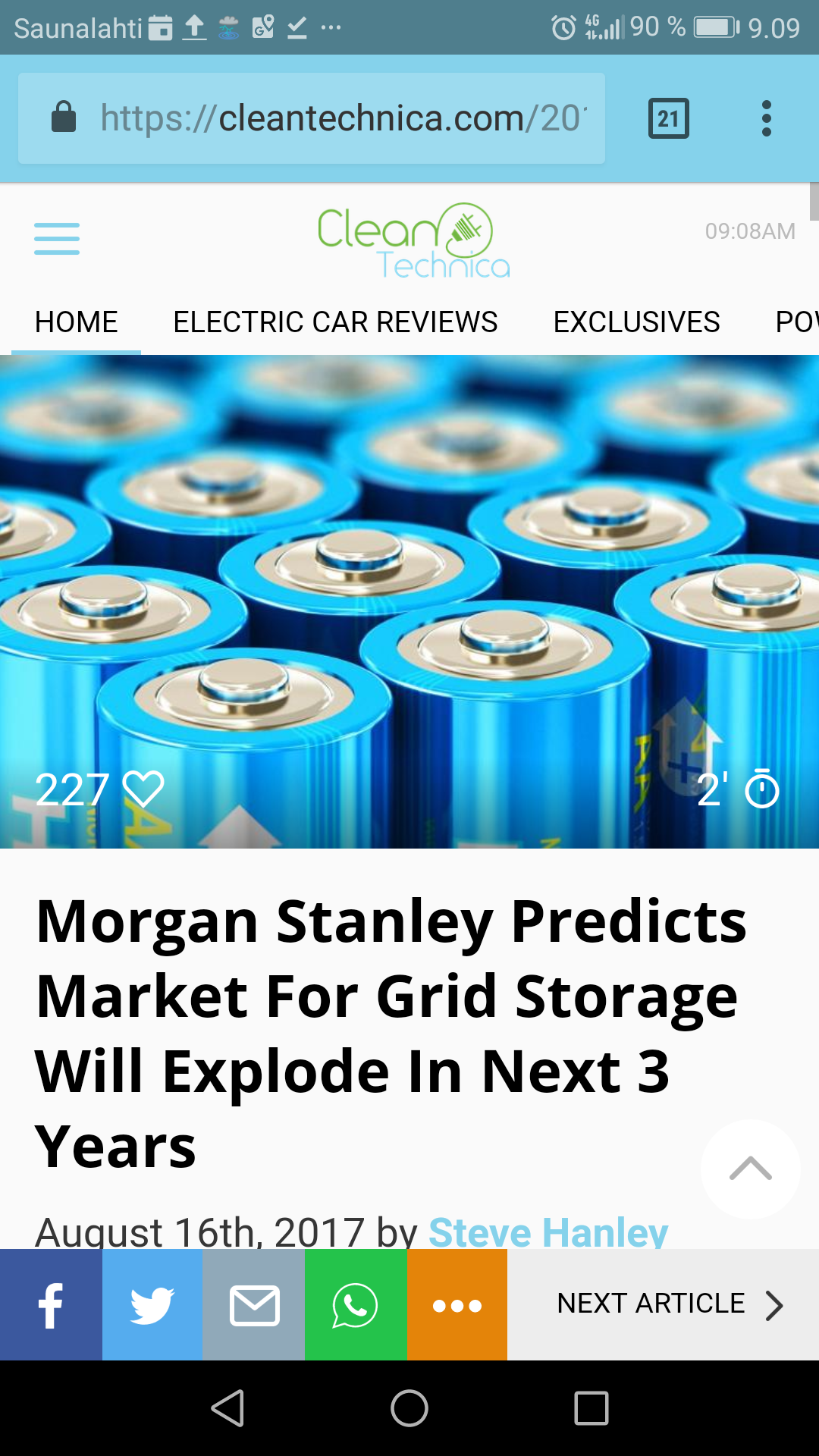A new report authored by Stephen Byrd, a utility and cleantech analyst at Morgan Stanley, and Adam Jonas, its auto analyst, shows that they are bullish on the market for grid storage products. “Demand for energy storage from the utility sector will grow more than the market anticipates by 2019–2020,” the pair says.
They predict the demand for grid-scale storage will increase from less than $300 million a year today to as much as $4 billion in the next 2–3 years because of the low price of wind and solar energytogether with the falling price of grid storage products.

101 Comments
Tomi Engdahl says:
World’s largest sand battery goes live: 100 MWh system cuts CO2 emissions by 70%
The battery is set to cut Pornainen’s district heating emissions by nearly 70 percent, reducing CO2-equivalent output by about 160 tons annually.
https://interestingengineering.com/innovation/worlds-largest-sand-battery-finland